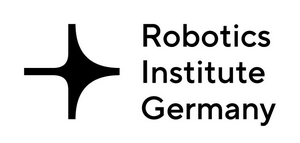
Research Departments
- Agents and Simulated Reality 2
- Augmented Vision 1
- Cognitive Assistants 1
- Cooperative and Autonomous Systems 1
- Cyber-Physical Systems 1
- Embedded Intelligence 2
- Innovative Factory Systems 1
- Robotics Innovation Center
Research Topics
- Autonomous Systems 15
- Data Management & Analysis 4
- Human-Machine Interaction 5
- Image Recognition & Understanding 5
- Machine Learning & Deep Learning 11
- Other 3
- Robotics 17
- Sensors & Networks 7
- Virtual & Augmented Reality 3
Fields of application
- Environment & Energy
- Farming & Agricultural Technology 6
- Health & Medicine 2
- Industrie 4.0 8
- Mobility 5
- Other 7
- Smart Home & Assisted Living 3
- Trade & Logistics 3
Search narrowed by:
Displaying results 1 to 10 of 20.
Research Departments
- Agents and Simulated Reality 2
- Augmented Vision 1
- Cognitive Assistants 1
- Cooperative and Autonomous Systems 1
- Cyber-Physical Systems 1
- Embedded Intelligence 2
- Innovative Factory Systems 1
- Robotics Innovation Center
Research Topics
- Autonomous Systems 15
- Data Management & Analysis 4
- Human-Machine Interaction 5
- Image Recognition & Understanding 5
- Machine Learning & Deep Learning 11
- Other 3
- Robotics 17
- Sensors & Networks 7
- Virtual & Augmented Reality 3
Fields of application
- Environment & Energy
- Farming & Agricultural Technology 6
- Health & Medicine 2
- Industrie 4.0 8
- Mobility 5
- Other 7
- Smart Home & Assisted Living 3
- Trade & Logistics 3





